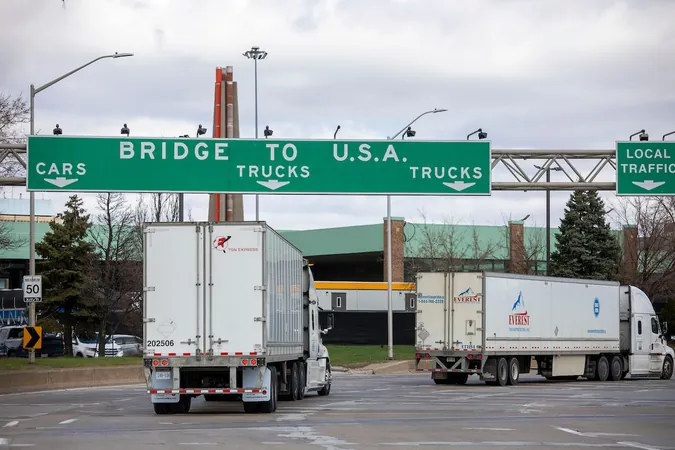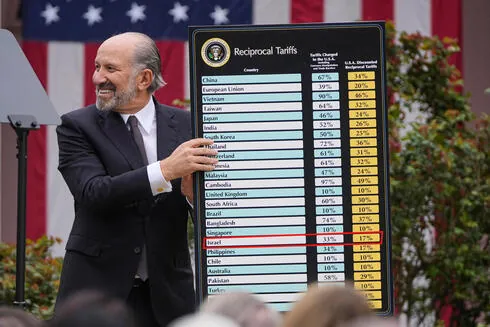
Shocking New Fentanyl Data Reveals Inaccuracies in U.S. Claims About Canadian Drug Traffic
2025-04-02
Author: Sophie
Shocking New Fentanyl Data Reveals Inaccuracies in U.S. Claims About Canadian Drug Traffic
Recent revelations from newly released data have cast serious doubts on the U.S. government’s portrayal of Canada as a primary contributor to the fentanyl crisis in America. A report obtained through American freedom-of-information laws shows that less than 0.1% of fentanyl seizures at the northern border have been directly linked to Canada by U.S. border officials.
In fiscal year 2024, U.S. Customs and Border Protection reported that 99.87% of fentanyl seizures in the northern border region, which spans across 34 states, were associated with either Mexico, the U.S. itself, or had unspecified origins. Specifically, only 0.74 pounds of fentanyl, representing a minuscule 0.13%, was traced back to Canada. This data does not account for ongoing investigations, including at least one case already documented as connected to Canada.
This stark figure brings into question the justifications made by the Trump administration for declaring a national emergency regarding fentanyl allegedly 'pouring' into the U.S. from Canada. The emergency declaration granted powers that allowed for the imposition of tariffs on Canadian goods without congressional approval, leading to growing tensions between the two countries.
Dismissing the narrative of a significant surge of fentanyl from Canada, the White House has repeatedly cited a misleading number: 43 pounds of fentanyl seized at the northern border, claiming a shocking 2,050% increase from the previous year. However, investigative results from The Globe reveal that a significant portion of this figure consists of drugs seized further inland, attributed largely to Mexican drug cartels.
Furthermore, President Donald Trump's administration's focus on the northern border diverges sharply from insights provided by the Drug Enforcement Administration (DEA), which has emphasized the pivotal role of Mexican cartels in the drug crisis. In stark contrast, the DEA reported that approximately 21,100 pounds of fentanyl were seized at the southern border in the same fiscal year, clearly indicating where the real threat lies.
As the U.S. Senate prepares to vote on whether to terminate the state of emergency—a resolution that has garnered bipartisan support—President Trump has vehemently opposed this challenge, maintaining that a continued national emergency is vital to combatting the opioid epidemic.
Interestingly, the released data also indicates that of the 555 pounds of fentanyl seized in the northern border region during fiscal year 2024, the vast majority was sourced from other countries, primarily Mexico. A staggering 40% of the seizures were categorized as “unknown,” suggesting that a connection to Canada is possible but unverified.
The implications of this data extend beyond mere statistics, raising critical questions about policy-making practices. Regina LaBelle, who formerly directed the White House Office of National Drug Control Policy, noted that linking Canada to the opioid threat was a departure from conventional policy development, which typically relies on comprehensive assessments backed by evidence from multiple agencies.
In summary, the new data challenges longstanding narratives within the U.S. government regarding Canada’s role in the fentanyl crisis, hinting that the true origins of the crisis may lie closer to home, particularly with the overwhelming influence of Mexican drug cartels. As discussions around border security and drug enforcement continue, these insights are likely to shape future policies and foster new dialogues about how best to address the opioid epidemic in North America.









 Brasil (PT)
Brasil (PT)
 Canada (EN)
Canada (EN)
 Chile (ES)
Chile (ES)
 Česko (CS)
Česko (CS)
 대한민국 (KO)
대한민국 (KO)
 España (ES)
España (ES)
 France (FR)
France (FR)
 Hong Kong (EN)
Hong Kong (EN)
 Italia (IT)
Italia (IT)
 日本 (JA)
日本 (JA)
 Magyarország (HU)
Magyarország (HU)
 Norge (NO)
Norge (NO)
 Polska (PL)
Polska (PL)
 Schweiz (DE)
Schweiz (DE)
 Singapore (EN)
Singapore (EN)
 Sverige (SV)
Sverige (SV)
 Suomi (FI)
Suomi (FI)
 Türkiye (TR)
Türkiye (TR)
 الإمارات العربية المتحدة (AR)
الإمارات العربية المتحدة (AR)